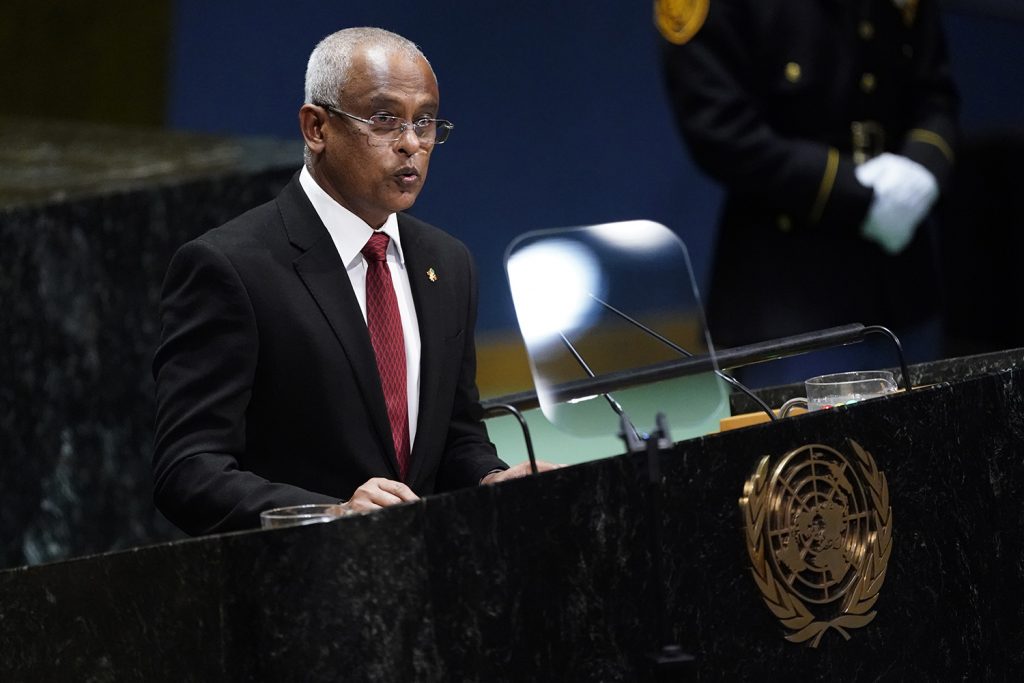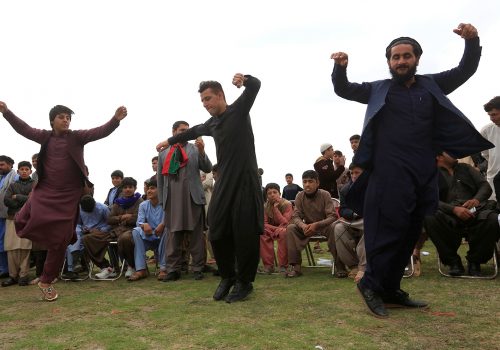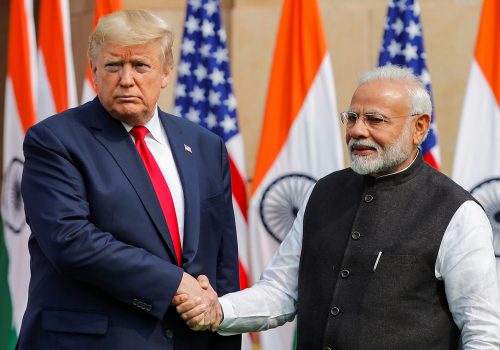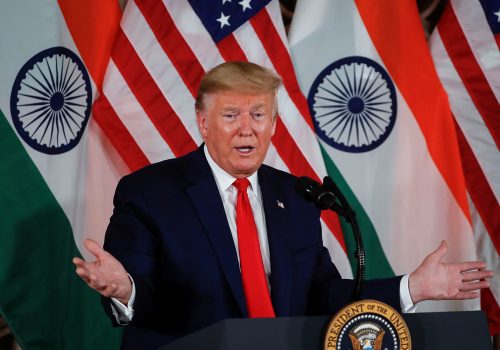South Asia: The road ahead in 2020
Introduction
By Irfan Nooruddin
South Asia presents a vivid tapestry of human diversity in all its glory. Across its eight countries, adherents of all the world’s religions live side-by-side, speaking hundreds of languages and dialects, sharing deep cultural similarities, and celebrating their differences. South Asia’s economies are powered by an energetic young population eager to embrace 21st century economic opportunities and conscious of their growing centrality to global geopolitical calculations.
Whether the governments of South Asia’s countries are capable of delivering on this promise is another question. As our country analyses make clear, each state faces serious policy and governance challenges that must be addressed in 2020. We hope that our thinking sparks debate and discussion, both in the region and around the world among all who desire a peaceful and prosperous South Asia. The future of a quarter of the world’s population depends on us asking the right questions and working together to answer them as best we can.
Click here to read the South Asia Center’s midyear update on these governance issues and more.
Jump to a country:
India
By Trevor Cloen
India enters 2020 with escalating questions regarding economic security, nationalism, and identity. Widely viewed as an emerging driver of global growth just a year ago, it now faces a slowing economy and social unrest. Recent decisions to abrogate the special status of Kashmir and implement controversial citizenship laws have incited widespread protests, and concerns of escalating majoritarian politics continue to grow. More so than in any recent time, India faces questions regarding internal political divisions, sectarian politics, and its ability to provide opportunity for millions of its young people.
Who is considered an Indian citizen?
The passage of the Citizenship Amendment Act (CAA) in December 2019 undermines principles of secularism embedded in India’s constitution. The law establishes an expedited path to citizenship for regional asylum-seekers subject to religious affiliation, pointedly excluding Muslims. The constitutional validity of the CAA is being considered by the Supreme Court, and seven states have said that they will not implement the law. A likely Supreme Court ruling in 2020 will have profound implications for Indian secularism and for efforts by the Bharatiya Janata Party (BJP) to incorporate religious preference into the Indian state.
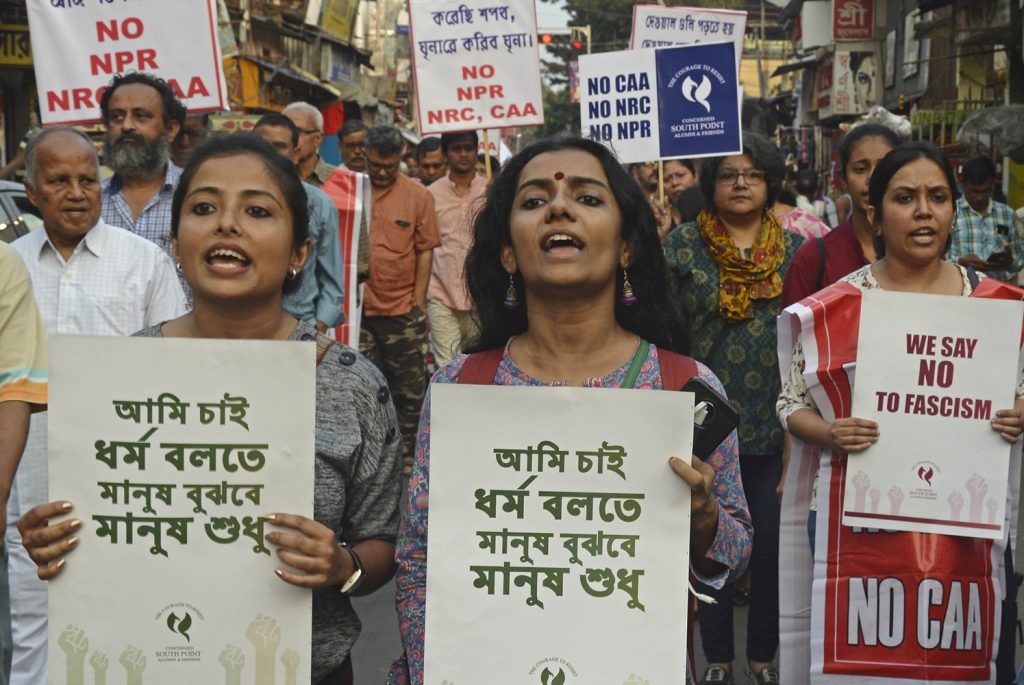
Taken together, the CAA and NCR raise serious concerns about who is and will be considered an Indian citizen, and about the role of majoritarian politics in India’s democratic system.
Legal disputes over the CAA coincide with ongoing controversy surrounding the National Citizen Registry (NCR), which mandates that residents provide documentation to “prove their presence in Assam or in any part of India on or before 24 March, 1971” in an effort to identify undocumented entrants from Bangladesh. This exercise is exceedingly problematic in India, where millions remain illiterate or do not possess the necessary documentation to prove citizenship. Initial implementation of the exercise has excluded over two million predominantly Muslim individuals in the state of Assam alone, threatening to render them stateless, and Home Minister Amit Shah has publicly supported extending the exercise nationwide through the National Population Register.
Taken together, the CAA and NCR raise serious concerns about who is and will be considered an Indian citizen, and about the role of majoritarian politics in India’s democratic system. The coming year will be instrumental in determining whether these measures are upheld by courts and whether governance in India will continue to be shaped by religious preference.
The limits of data privacy protections
The Indian Parliament is expected to vote on the Personal Data Protection Bill, 2019 during the 2020 budget session. If passed, India will become the third large entity (following the European Union and China) to implement formal legal frameworks governing how private entities use and share personal data. Modelled after the European Union’s General Data Protection Regulation, the Personal Data Protection Bill would equip Indian consumers with a wide range of rights and tools to assert greater control over how personal data is collected and stored by private entities, including mandating informed consent for data to be collected and processed—the “right to be forgotten”—and the ability to request and delete personal data collected by private entities.
However, the Personal Data Protection Bill would also permit a dramatic expansion of state access to individual data for purposes related to “the sovereignty, territorial integrity, and security of the Indian state.” Under the current draft legislation, government offices will be equipped with a wide-ranging exemption to restrictions established by the bill, with possible applications to growing use of surveillance technologies for law enforcement purposes. Home Minister Shah has publicly supported the implementation of country-wide surveillance measures, including overseeing the implementation of the world’s largest facial recognition system, and facial recognition systems and listening devices are increasingly being implemented in public spaces to combat crime. Legal and institutional protections have not caught up with the push to implement emerging surveillance technologies, raising the risk of potential abuse by law enforcement or the central government.
Public dissent and civil society
More than in any recent period, Indian law enforcement has increasingly used authoritarian means to control displays of public dissent. Last year India imposed ninety-five internet blackouts, the most of any country worldwide. Thousands were arrested in Kashmir without charges following the abrogation of the territory’s special constitutional status, and prominent politicians including Farooq Abdullah, Omar Abdullah, and Mehbooba Mufti remain in custody, charged under India’s draconian Public Safety Act. Across the country, officials have used colonial-era laws to prevent public protest against the CAA across the country, and cell and SMS services were blocked across pockets of New Delhi. Tensions between protesters and the central government have taken an increasingly nationalist tenor, with accusations of anti-national sentiment against protesters and opposition figures in the February 2020 Delhi elections.
Tension between law enforcement and freedom of speech advocates will continue in 2020. Controversial citizenship and social policies by the central government will continue to generate debate and protest among India’s diverse and vibrant civil society. Despite this diversity, widespread attempts to silence expressions of public discontent raise the question, what is the exact role of civil society and expression of dissent in India’s political discourse? Many of the measures taken in 2019 more closely resembled tactics resorted to by authoritarian regimes than that of the world’s largest democracy. The manner in which the central government responds to public discourse, and civil society’s reaction, will be critical for the health of India’s democratic tradition in the coming year.
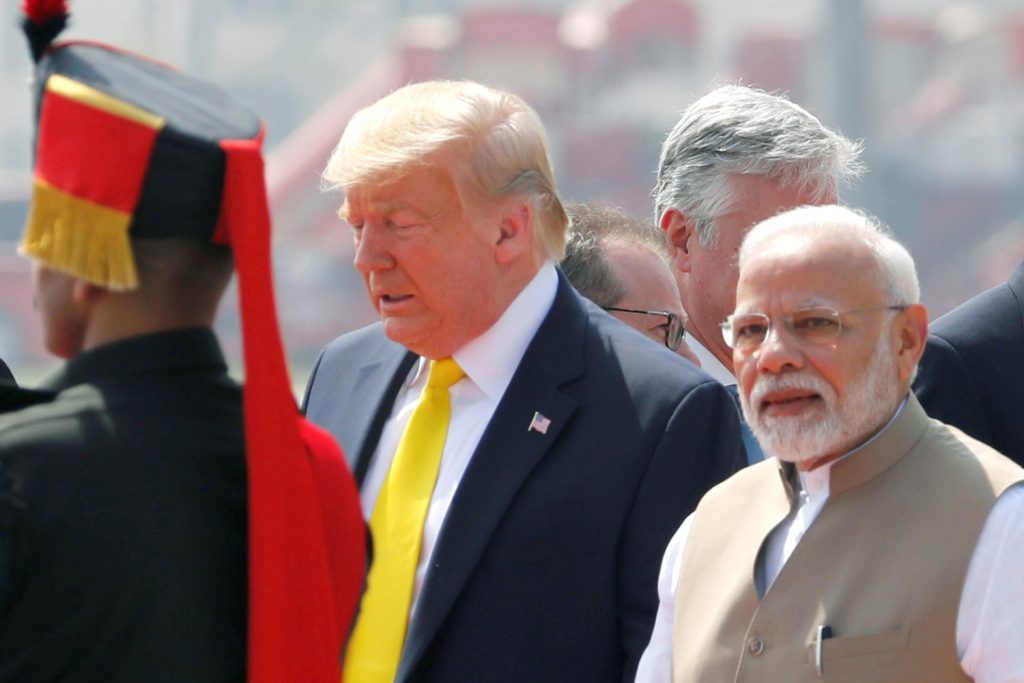
The coming year will indicate the extent of India’s economic woes, and whether deeper institutional change is required to push the economy back on track.
Tepid growth and an uncertain future
India’s economy is in the midst of its sharpest slowdown in two decades. Gross domestic product growth has fallen from 8 percent in the second quarter of 2018 to 4.5 percent in the third quarter of 2019, consumer sentiment has fallen dramatically, unemployment has reached a four-decade high, and credit growth has slowed due to the continued questionable health of credit-lending institutions.
Despite these challenges, there remains no consensus as to the underlying causes of the abrupt slowdown. Policymakers and economists continue to debate whether the economy is experiencing a cyclical downturn caused by unfavorable conditions in the global economy, or the result of deeper structural issues in the country’s financial institutions. For now, the central government appears to believe that the dip in growth is cyclical and has responded with fiscal stimulus. The 2020 Union Budget instituted a new personal income tax regime that lowered gross tax rates on the middle class and instituted modest increases in rural subsidies and infrastructure spending, and abruptly moved to cut the corporate tax rate from 30 percent to 22 percent in September 2019 to spur manufacturing growth. Yet these changes do little to address perennial structural issues, including state-owned banks’ large percentage of non-performing assets, obstructive land and labor laws, and an uncertain business environment.
Amid these conflicting viewpoints, it remains unclear if short-term stimulus will be sufficient to restore growth to the levels needed to transform India. In a country that must generate twelve million jobs annually to accommodate entrants into the workforce, such a sharp slowdown raises concerns of a broader societal unrest and political backlash. The coming year will indicate the extent of India’s economic woes, and whether deeper institutional change is required to push the economy back on track.
Pakistan
By Fatima Salman
Pakistan’s economic downturn amid a changing political-military environment presents a challenging agenda for Prime Minister Imran Khan’s Pakistan Tehreek-e-Insaf (PTI) party as it enters 2020. With an exceedingly shrinking space for civil society and an emboldened right-wing, Naya Pakistan is turning out to be the same-old Pakistan. Khan’s toughest test is yet to come as he juggles political instability with policy inconsistencies. 2020 could be the year when Khan gets things on track or things could fall apart quickly. Pakistanis will face the erosion of living standards and limited economic growth and will also be tested overseas with escalating confrontations between neighboring Iran and the United States, the increasingly imminent withdrawal of US troops from Afghanistan, and the continued potential for large-scale hostilities along Pakistan’s eastern border.
Pakistan’s E-Khan-no-money problem
Two years into the Khan administration, Pakistan has seen mixed progress characterized by a reluctance to stabilize the economy. In 2019, the government lost control of its spending and borrowed in record amounts to make up for its failures to mobilize revenues. 2020 opens with high inflation amid an increase in oil prices, contracting deficits, and ongoing structural adjustment. Khan will need to expand his hitherto limited impact on economic policy by presenting a reform agenda to resuscitate the economy, including establishing a proper economic decision-making process that can operate across the government. As the implementation of the International Monetary Fund (IMF) stabilization program deepens in its second year, the government will have to enact structural reforms. The coming year poses a real challenge for Khan to lead a strong center of executive power in Pakistan to coordinate the implementation of key economic decisions as Pakistanis demand more sustainable policies from their leaders. If Khan fails to demonstrate a robust reform agenda, his PTI government might run its course before the end of the year.
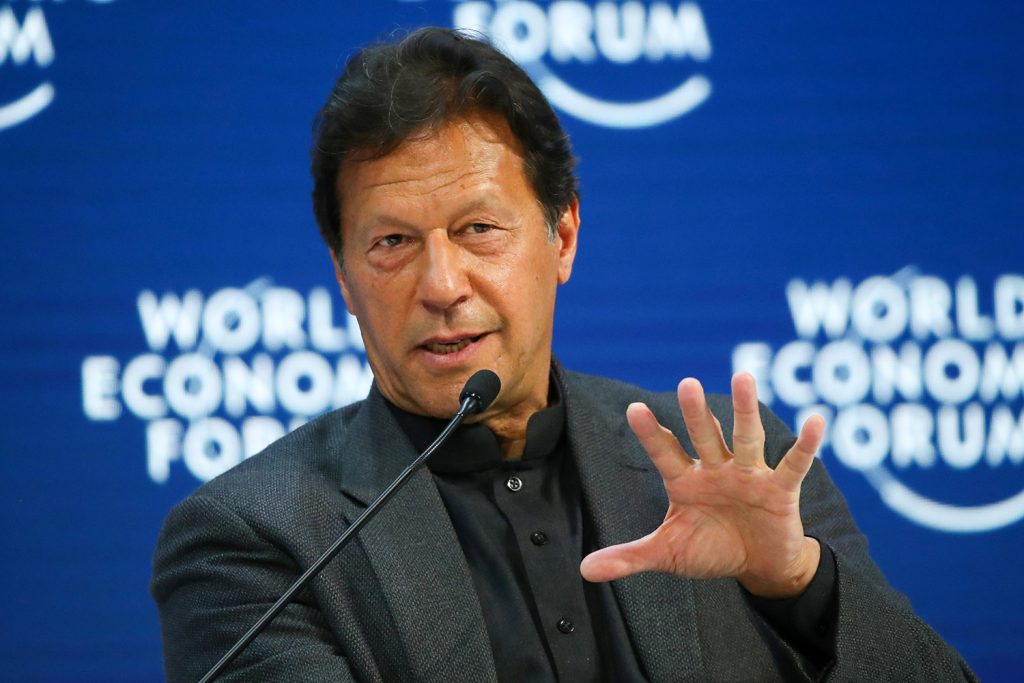
Khan will need to expand his hitherto limited impact on economic policy by presenting a reform agenda to resuscitate the economy, including establishing a proper economic decision-making process that can operate across the government
Civilitary control
Economic prosperity in Pakistan is unachievable without political stability, making it imperative for the PTI to project at least the perception of unity. Imran Khan’s biggest challenge will be consolidating power to minimize military interference (the so-called minus-one formula). The military remains Pakistan’s most trusted, disciplined, and cohesive institution, which carved out a growing role for itself in 2019. Meanwhile, the PTI has little to show for its eighteen months in office. If Pakistanis wanted a strong leader, they have got one in Army Chief General Qamar Javed Bajwa. The military has quietly enacted a far more aggressive agenda under General Bajwa, including formalizing the military’s role in economic policy by joining the National Development Council and leading efforts to work directly with the United States to assist in the Afghan reconciliation process. 2020 will reveal whether the military establishment led by General Bajwa and Pakistan’s political institutions are “all on one page.”
If the army continues its traditional role as power broker, the PTI will struggle to assert civilian supremacy. This year, the army may shift its support among and between the mainstream and “religious parties.” Their tactic is to play opposition parties like the PTI and PML-N against each other while silent conservative right-wing Pakistanis—routinely supported by the army— are emboldened by India’s growing anti-Muslim political posturing. Along the country’s deep political fault lines, look for pressure to build in the country’s toughest regions, including the upcoming Gilgit Baltistan Legislative Assembly elections, where the $46 billion China Pakistan Economic Corridor (CPEC) construction is underway and the PML-N leads in early polling.
Four hot corners
Pakistan’s four hot corners are expected to flare up in 2020. With China exerting its Belt and Road Initiative (BRI) vertically through the country and India’s Modi government doubling down on its anti-Muslim policies, Pakistanis will need to assert their political and diplomatic muscles against these various proximal threats. In 2020, the growing tensions between the region’s Hindu and Muslim communities could drive regional unrest in both countries, further threatening a wider conflict. Meanwhile, the Khan government continues to struggle to put in place workable mechanisms for implementing the second phase of CPEC—a $1 billion public and private collaboration in industrial, agriculture, and social sectors in Pakistan.
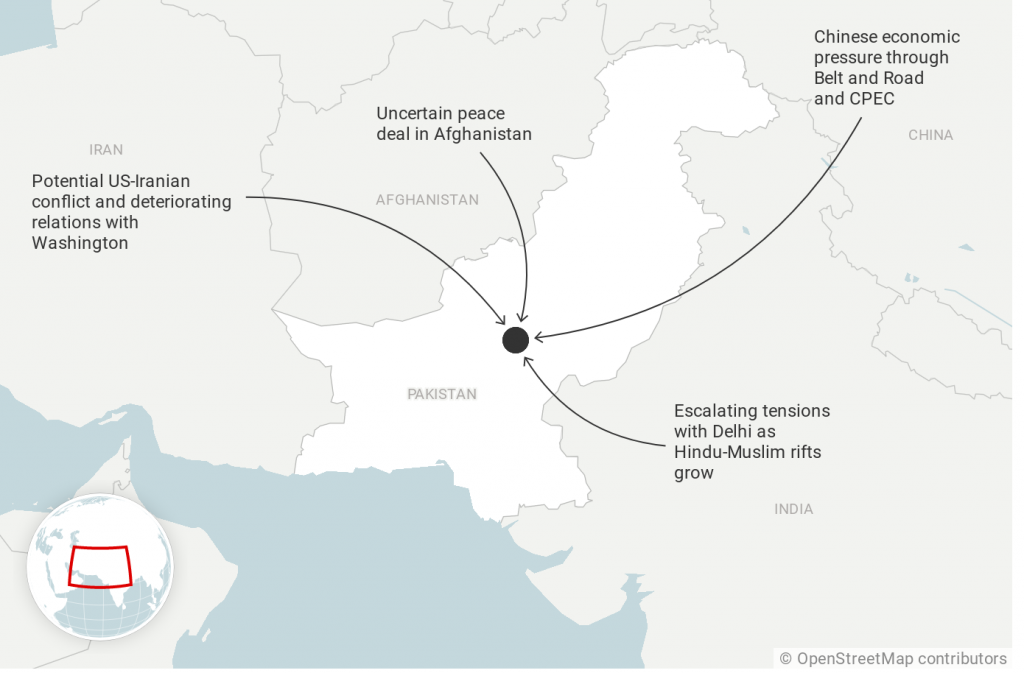
With China exerting its Belt and Road Initiative (BRI) vertically through the country and India’s Modi government doubling down on its anti-Muslim policies, Pakistanis will need to assert their political and diplomatic muscles against these various proximal threats.
On the other side of the country, 2020 will be a pivotal year for Afghanistan-Pakistan relations. The biggest concern for Pakistan remains how big its slice of the pie politically will be when the United States withdraws, which includes making sure Afghanistan is run by a friendly government over which it has influence (especially over India) in order to maintain its “strategic depth.” In the run up to a US withdrawal, Pakistan will double down efforts to ensure that a surge in fighting in Afghanistan will not have spillover effects and inflame unrest in Pashtun-dominated areas. Islamabad and Rawalpindi will continue to preserve their influence in Afghanistan through the Taliban, ensuring they will be a part of some post-agreement government sharing structure in Kabul.
A shadow still hangs over US-Pakistan relations following US President Donald J. Trump’s decision to suspend a $2.41 million US security assistance program to Pakistan. However, as a reward for Islamabad’s cooperation in facilitating Washington’s peace talks with the Taliban, the United States announced it will soon resume the International Military Education and Training (IMET) programs for young Pakistani army officers. 2020 will involve several resets of relations between the two countries as they move beyond security-related cooperation into a more mature bilateral relationship focused on trade and investment, especially as Pakistan remains a key avenue to counter Iranian aggression in the region.
Afghanistan
By Harris Samad
The new year in Afghanistan sees a continuation of challenges domestically, regionally, and with the United States, as attempts to negotiate an end to nearly two decades of conflict struggle to maintain traction. The robustness of the democratic process in Afghanistan underwent a major stress test as the country remained without a finalized presidential succession for five months following the September 2019 election, with President Ashraf Ghani finally declared the winner amid allegations of voting fraud by his competitor, Abdullah Abdullah. The Intra-Afghan Dialogue will define the continued relevance of the Taliban in Afghan politics and society, as will the terms and conditions of a US withdrawal and the negotiated truce with the Taliban.
Afghanistan and regional powers
Following the serious escalation of tensions between the United States and Iran in 2019, an increased Iranian presence (either directly or through proxies) in Afghanistan became a serious point of concern for Kabul and allies. The Government of Afghanistan declared neutrality and explicitly stated that it refuses to serve as a proxy ground in the now four-decades-old geopolitical standoff between Tehran and Washington. Kabul and its security apparatus, however, may lack the security apparatus capacity to enforce this refusal for its territory to serve as a battleground for the longstanding Washington-Tehran conflict. Additionally, Brigadier General Ismail Qaani, the new head of Iran’s Quds Force appointed following his predecessor Qasem Soleimani’s killing by a US drone strike, has previously overseen operations in Afghanistan and Pakistan. Whether this will become relevant remains yet to be seen.
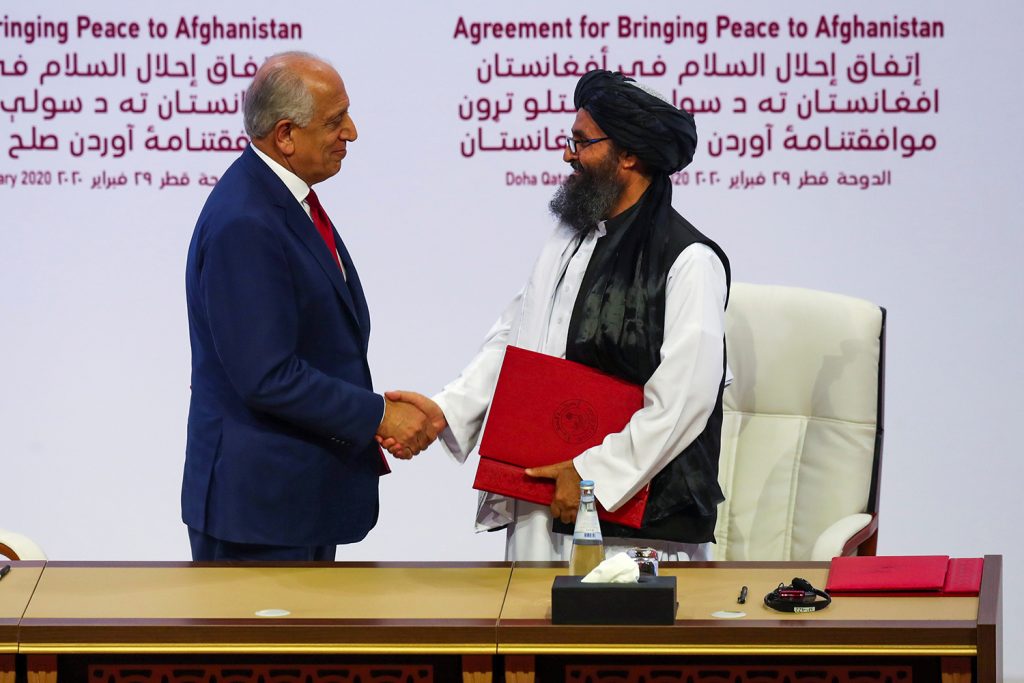
US President Donald J. Trump’s desire to end the United States’ “endless wars” may indeed begin with a withdrawal in Afghanistan, but this will prove to be a messy affair.
Pakistan continues to play a multifaceted role in Afghanistan. Its facilitation of talks between the Taliban and the United States are seen by some as an attempt by Islamabad to rebrand the country’s image. Tensions with India raise doubts about the sincerity of this gesture, however, especially in context of India’s desire to expand trade ties with Afghanistan. A strong Kabul could more easily facilitate Indian presence in Afghanistan and fulfill Pakistan’s perpetual fear of Indian encirclement. For this reason, Islamabad will likely maintain ties to militant groups to derail Afghan democratization and keep Kabul susceptible to Pakistani influence. Islamabad also knows that—regardless of how—the United States will eventually pull out of Afghanistan. Should the country once again plunge into civil war, Pakistan will want leverage over the wartime actors who will emerge as the most influential to deter acquiescence to Indian influence in Pakistan’s western neighbor.
A looming US withdrawal
US President Donald J. Trump’s desire to end the United States’ “endless wars” may indeed begin with a withdrawal in Afghanistan, but this will prove to be a messy affair. The Government of Afghanistan struggles with a range of issues, such as corruption, geographical penetration of its security apparatus, limited state capacity for essential services, and a growing illicit criminal economy. The recently negotiated truce between the United States and the Taliban will theoretically bring a “reduction” in Taliban-sponsored violence, foreign troop withdrawal over a period of eighteen months, and a subsequent Afghan dialogue in March that includes the government in Kabul. The Taliban leadership’s ability to enforce a ceasefire among its many factions and peripheral groups, however, is questionable at best, as nearly every previous set of peace talks was subsequently derailed by a Taliban attack.
Even with successful implementation of this agreement, it is still unclear what separately negotiated terms will be necessary to keep the peace between Kabul and the Taliban. Filling the security presence vacuum will pose a huge challenge for Afghan security forces even if the US withdrawal only ends up being partial. Drastic changes to Afghanistan’s security environment seriously threaten its fragile republic and struggling economy, edging the country nearer to another civil war and exacerbating the already dire humanitarian situation. The opportunity for criminal and extremist groups to exploit this potential chaos remains high in 2020.
What must be included in the negotiations, and what can be left until after?
The way Afghanistan’s economic and political issues are handled in a withdrawal scenario will have enormous impact on the next decades of its development. The country has developed a sophisticated and robust war economy. Illicit finances and networks crosscut through political and economic structures in Afghanistan, tied to goods such as minerals and poppy, and criminal and insurgent groups. If left unaddressed in the recent US-Taliban truce and projected troop withdrawal, this economy could easily destabilize postwar Afghanistan, given its optimization to the chaos and lack of central authority intrinsic to a war environment. The Afghan government cannot simply expand and consolidate its authority over powerful regional and localized entities who are used to operating in a political vacuum. Additionally, these turbulent effects are multiplied when viewed through external entities connected to the networks. It also risks a rippling effect of destabilizing powerful patronage networks across greater South Asia and the rest of the world.
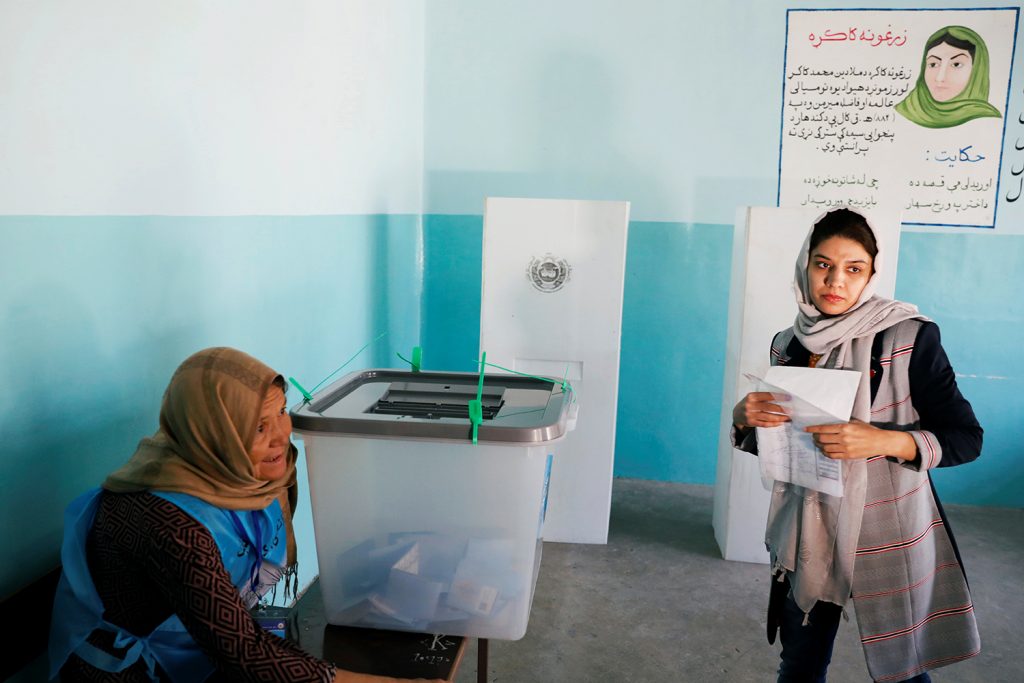
The Afghan government cannot simply expand and consolidate its authority over powerful regional and localized entities who are used to operating in a political vacuum.
Corruption
Recently reelected President Ashraf Ghani’s reputation of being an “incorruptible” technocrat has been significantly diminished during his time in office, and this does not bode well for anti-corruption reform in Afghanistan in 2020. State capture, patronage, financial unaccountability, legal impunity, and security sector abuses remain rife within the Afghan government. State actors are known to have ties to criminal patronage and illicit economy networks, with the state considered to be a “public sector mafia” by some Afghans. The central government’s extremely limited capacity for essential service delivery is only perpetuated by endemic corruption. This issue will be further undermined without the extensive, sustained security apparatus complement provided by the United States. Such a scenario would also negatively impact Kabul’s legitimacy as the political center of Afghanistan, already a common talking point for nonstate actors as justification for violent opposition.
Bangladesh
By Shuchismita Hassan
In 2019, Bangladesh maintained its status as one of the fastest growing countries in the world, led by rising exports and record remittances. This trend could continue throughout 2020 if the government and the Bangladesh Bank address the key issues facing the country with prudence. A lack of repatriation opportunities for Rohingya refugees, concerns of a potential credit crunch resulting from non-performing assets in the public banking sector, and tensions caused by the possible consequences of India’s Citizenship Amendment Act (CAA) on Bangladesh will be some of the national focal points in 2020.
What are the government’s plans for the Rohingya in 2020?
While Bangladesh has been deservedly lauded by the international community for its accommodation of the Rohingya refugee population, concerns continue about the conditions and long-term feasibility of the refugee camps in Cox’s Bazar. 655,500 refugees have fled ethnic cleansing attempts in Myanmar and settled in Bangladesh. Myanmar refuses to cooperate with a bilateral agreement signed in 2017, which had committed the two countries to gradual repatriation efforts. The indefinite nature of this crisis has strained government resources (international donor fatigue has also set in with the Joint Response Plan for 2019 being only 67 percent funded), and overwhelmed the host community. The large influx of refugees has led to growing tensions with the locals of Cox’s Bazar, who complain of massive traffic jams, rapid inflation of local food and transport costs, and depressed wages for agricultural and other unskilled workers.
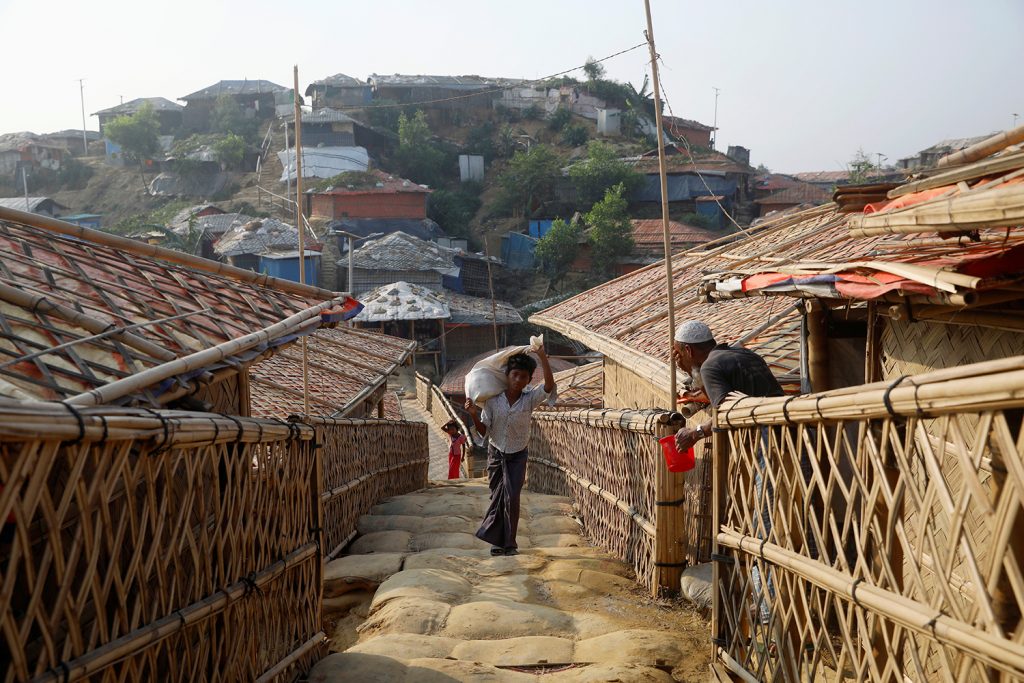
The government plans to address overcrowding in Cox’s Bazar by relocating Rohingya refugees to Bhasan Char, an island three hours from the mainland in the Bay of Bengal. The island has been outfitted with a housing complex capable of accommodating 100,000 people, including a recently installed solar power system, water supply lines, and grocery shops. Critics and human rights activists argue that the island is unfit for prolonged occupation. It is prone to severe flooding and cyclones, and portions are submerged for months every monsoon, a scenario that would create a new crisis threatening the refugees’ lives and send boatloads back to the mainland, amid allegations of neglect and mistreatment from the international community.
Will the public banking sector achieve financial stability?
Corruption in the banking sector may be a significant obstacle to maintaining the country’s impressive growth rate. In mid-2019, Moody’s Corporation, one of the world’s leading credit rating agencies, put Bangladesh’s banking system on its negative watch list. They cited worsening asset quality as a result of rising incidence of non-performing assets (NPAs) to justify the move. NPAs in the banking sector have been increasing at an alarming rate, and as of September last year, default loans in the banking sector of Bangladesh stood at approximately $13.7 billion, an all-time high. State-run banks were responsible for half of these bad loans, raising questions about the quality of governance of these banks.
Chief executives and board directors should arguably be appointed based on their background in the financial sector and proven accuracy in risk analysis. In Bangladesh, they are directly appointed by the government, supposedly based on their political allegiance to the ruling party instead of their competence. The Hallmark-Sonali Bank and Janata Bank scams, two high profile loan scandals in the country, were both made possible through the direct involvement of either their managers or their board of directors. Instead of taking measures to address such cronyism, Bangladesh Bank encouraged it further in 2019 by increasing the tenure of board directors and the number of family members allowed to be on the board.
In 2019, despite public controversy, Bangladesh Bank offered to reschedule loans, allowing a ten-year repayment period if the borrower could make a 2 percent down payment. This policy has led to repeat defaulters facing minimum penalties and, therefore, no new incentives for banks to identify and resolve internal inadequacies. Bangladesh Bank may have achieved short-term relief with government-funded bailouts and debt restructuring, but they have yet to address the corruption responsible for the crisis.
The finance ministry has said that the government is planning to set up a public asset management company in 2020, intended to buy bad loans from state banks and sell them to interested parties. In theory, such divestment could help mitigate the consequences of loan scams and repeat defaulters, and provide the oversight necessary to prevent such occurrences altogether. But if corruption at the highest levels of financial institutions is not addressed, it could easily pervert the governance of the proposed asset management company and continue to undermine financial stability.
How will the government accommodate displaced people from India?
Many in Bangladesh fear that India’s CAA will result in a large influx of Muslim refugees escaping persecution in India, at a time when the country is already sheltering hundreds of thousands of Rohingya refugees. Bangladesh—struggling to find solutions to the Rohingya crisis—is not infrastructurally, financially, or socially equipped to handle such an influx. Prime Minister Sheikh Hasina assured citizens that the new law would not be a burden on Bangladesh. She also denied any observable movement of people from India to Bangladesh after the CAA was passed, contradicting reports from BSF officials that illegal immigrants from Bangladesh have begun to flee India back to their native country in the wake of the CAA.
At the end of last year, Gowher Rizvi, an advisor to the prime minister, implied that the country will take back undocumented Muslim migrants from India, if there is concrete proof that they are Bangladeshi. Most of these refugees have not maintained economic or familial ties to Bangladesh and will need state sponsored help when they arrive. If Bangladesh maintains this stance throughout 2020, they will be responsible for providing the displaced people with resources, which have already been exhausted by the Rohingya refugee crisis.
Sri Lanka
By Fatima Salman
In 2020, President of Sri Lanka Gotabaya Rajapaksa will be judged on his past as a polarizing politician—a hero to the Sinhalese Buddhist majority and a loathed figure by the Tamil and Muslim minority. Victorious in a divisive 2019 presidential election, Rajapaksa faces major challenges at home and abroad, including a weakening macroeconomic landscape and the island’s paltry commitments to human rights. While Sri Lanka remains ethnically polarized, this years’ parliamentary elections will also exacerbate divisions within the ruling United National Party (UNP), riven with leadership battles and breakaway factions. The divided opposition will allow President Rajapaksa to steer Sri Lanka politically and financially toward China, as he considers ambitious structural and institutional changes to the Sri Lankan economy and society.
Democratic backsliding
With the Rajapaksa brothers in power—with Gotabaya appointing one brother Mahinda as both prime minister and finance minister and another brother as minister of agriculture—Sri Lanka could experience democratic backsliding with the curbing of freedom of speech, freedom of the media, and civil liberties. The results of the 2020 parliamentary elections, expected to be held in April or May 2020, will be telling in terms of Sri Lanka’s long-term stability. Rajapaksa will continue to walk a fine line—counting on nationalist support while seeking to prevent it from spilling over into communal violence. In 2019, the UNP’s poor governance and communication following the tragic Easter Sunday attacks demonstrated a real ineptitude to counter terrorist threats, which ultimately fueled the Rajapaksa comeback with promises of security and unity. Rajapaksa’s stronghold on the majority Sinhalese vote and commitment towards counterterrorism efforts at home have won popular support.
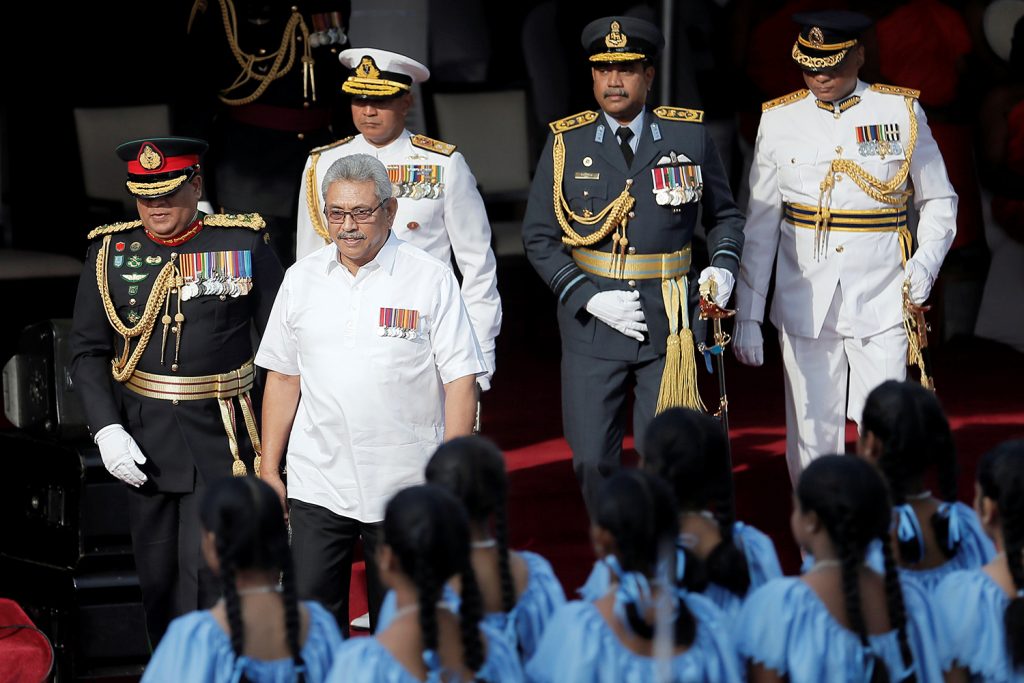
The divided opposition will allow President Rajapaksa to steer Sri Lanka politically and financially toward China, as he considers ambitious structural and institutional changes to the Sri Lankan economy and society.
Scrambling for geopolitical influence
India and China have been competing for influence in Sri Lanka since 2014, when Rajapaksa was defense secretary and his brother Mahinda Rajapaksa was the president. Many expect Rajapaksa to look to Beijing to help deliver his key campaign promise of revitalizing an economy saddled in billions of dollars of debt. While Sri Lanka may be keen to cultivate a strategic relationship with China, growing anti-Muslim sentiment after the Easter Attacks could draw Colombo closer to India. Against this backdrop, Rajapaksa and Indian Prime Minister Narendra Modi have pledged to strengthen military ties and widen maritime links as a part of Modi’s “Neighborhood First” policy. The move comes as the US government’s new Free and Open Indo-Pacific strategy paves the way for Sri Lanka to become a player in the region’s growing military competition.
Debt burden
As Rajapaksa steers Sri Lanka closer to China politically and financially, his biggest economic challenge will be attracting new investments and strengthening trade ties from a range of countries. The island’s foreign exchange earnings from exports remain insufficient to meet its international debt obligations and Rajapaksa needs to demonstrate an immediate economic dividend despite this. Rajapaksa’s visit to New Delhi in late 2019 was a step in this direction, with India offering to lend Colombo $400 million for infrastructure development. Colombo has benefitted from duty-free access to the European Union (EU) markets under their Generalized Scheme of Preferences Plus (GSP+); Sri Lanka’s exports to the EU have increased by more than 20 percent since 2017. However, Colombo’s recent withdrawal from a 2015 resolution calling for an investigation into alleged human rights violations committed during the country’s long civil war puts this preferential access into question. Rajapaksa’s biggest challenge remains the economy and in 2020 he will need to continue to attract foreign investment despite major economic headwinds.
Nepal
By Zaara Wakeel
Nepal is at the center of an evolving geopolitical space in 2020. As India, China, and the United States seek to extend their economic and political influence in the country, Nepal continues to struggle with internal social reform. Yet, Nepal enters 2020 offering advantageous investment conditions in a number of markets for investors due to its affordable labor, high profitability, low land costs, and a fairly accessible bureaucracy centered in Kathmandu. As competition between India and China for regional dominance grows, Nepal can leverage this dynamic to its own benefit, securing benefits from both superpower aspirants by virtue of its strategic location.
Status of human rights
Eroding human rights are at the forefront of domestic issues in Nepal. Despite the establishment of Nepal as a secular republic in 2015, religious minorities remain under threat in Nepal. Last year, the former Hindu monarchy failed to provide basic rights to its citizens with reports of widespread incidents of religious persecution and discrimination targeting Christian, Buddhist, Muslim, and Dalit minorities. In 2020, religion will dominate the political agenda in Kathmandu, with anti-secular campaigns gaining momentum in a region where Hindu nationalism is gaining popularity. Not only is Nepal a young secular democracy, it is also a “least developed country,” economically dependent on its neighbors—India and China—and more generally on foreign aid. If the government is unable to safeguard the rights of all its citizens and build popular consensus, it might prevent much needed international aid and foreign investment.
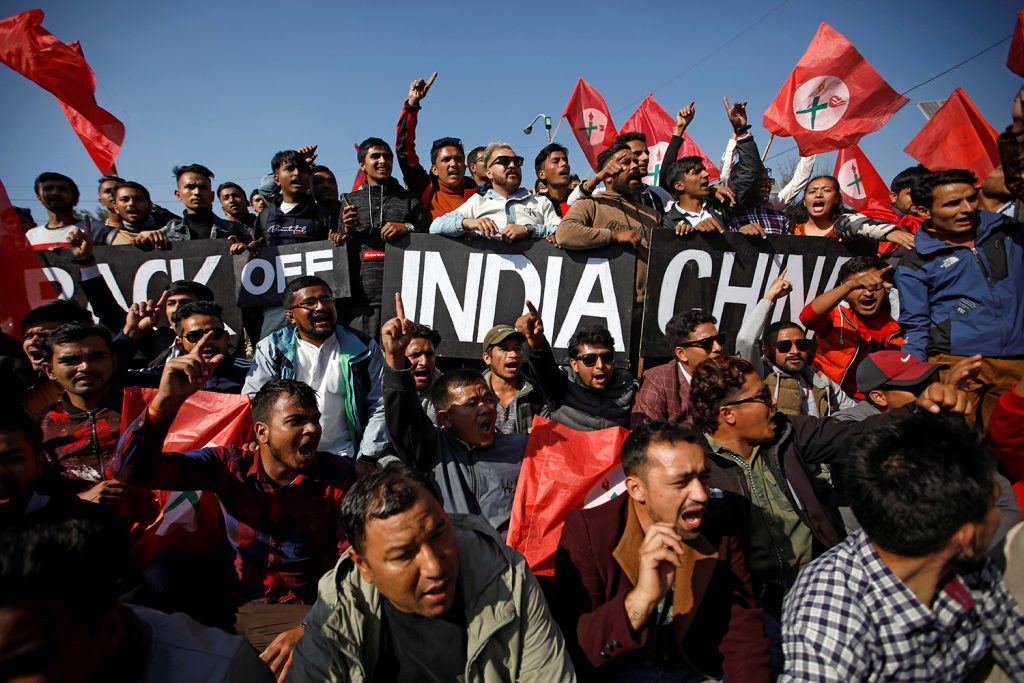
In 2020, religion will dominate the political agenda in Kathmandu, with anti-secular campaigns gaining momentum in a region where Hindu nationalism is gaining popularity.
Energizing the economy
Nepal enters 2020 aspiring to grow its tourism and hydroelectric industry, and Kathmandu has made 2020 the “year of tourism,” hoping to promote Nepal as the ideal travel destination and enhance economic growth through local tourism. Other economic targets include capitalizing on the various foreign investment projects in the energy sector like the Arun III hydropower project with India and the Asian Infrastructure Investment Bank (AIIB) loan of $90 million for the “Power Distribution System Upgrade and Expansion Project.” Nepal will continue to rely on investment from its neighbors in 2020 to build its electricity and transportation infrastructure to ensure that remote hilly regions—especially those in West Nepal—are connected to the country’s urban centers.
Intriguingly, the government is facing widespread opposition to accepting and utilizing aid from the Millennium Challenge Corporation (MCC). The opposition—led by influential party leaders like Bhim Rawal and Pushpa Kamal Dahal from within the ruling National Communist Party (NCP)—has blocked foreign aid directed towards electricity and transportation infrastructure development. Those who oppose MCC’s aid are concerned that it is part of the US Indo-Pacific Strategy and a US plan to use Kathmandu as a pawn in a geopolitical rebuttal to China’s Belt and Road Initiative. They argue that this agreement could drag Nepal into a military alliance with the United States.
Kathmandu may be picking a fight it really cannot afford this year. Nepal received $127 million in foreign aid from the United States in 2018. Further delay in the implementation of the MCC Compact could harm the US-Nepal bilateral relationship by making it more difficult for Nepal to receive the much-needed foreign aid from US in the future.
Climate change
With an economy largely dependent on its tourism and hydropower industries, Nepal cannot afford to ignore the threat of climate change. To ensure that the tourism industry continues to yield revenue, Nepal must preserve its natural heritage for sustainable long-term use. Protection of the Himalayas—which is the lifeline of Nepal’s agriculture, electricity, and human capital—has become an ever-more important policy issue for Kathmandu. Nepal’s reliance on the Ganga- Brahmaputra-Meghna basin for its agricultural production has left millions of its communities vulnerable to displacement, food scarcities, and electricity shortages.
As Nepal leads regional efforts to mobilize members of the South Asia Association for Regional Cooperation (SAARC), it is also making headway through its Sagarmatha Sambad—a global forum promoting positive impact against climate change in the Himalayas. If Nepal succeeds in convening the SAARC membership to discuss a critical issue in the region, it will encourage constructive engagement amidst the strained geopolitical alliances in the region.
Nepal’s transition to federalism
Nepal’s troubled transition to a federal state will continue in 2020. Kathmandu is receiving support from the World Bank and United Nations Development Program (UNDP) on its road to becoming a federal democratic republic. It is important for Nepal to comply with the recommendations from the World Bank and UNDP to draft a clear roadmap of the next steps in this process. The biggest challenge the government faces is collaboration with local authorities on common developmental goals and ensuring that the local government receives the funds they are allocated in the budget. Reallocation of a larger budget to the local governments will ensure the optimal use of vast regional resources and that economic development is spread to the remote areas beyond Kathmandu.
In 2020, the status of freedom of religion and human rights in Nepal remains ambiguous at best. Nepal needs to proceed with caution in becoming too dependent on China or it might find itself in the same position as Myanmar—creeping authoritarianism coupled with massive balance of payments issues in the decade ahead. Nepal should diversify and create new economic interdependencies with other smaller South Asian countries, including Bangladesh for its hydro-energy projects and carve a more influential geopolitical role through the Sagarmath Sambad.
The Maldives
By Zaara Wakeel & Shuchismita Hassan
In 2020, the Maldives’ President Ibrahim Mohamed Solih will lead the chain of islands into a new phase of geostrategic importance. While he continues building constructive relations with India, the Maldives falls deeper under China’s political and financial influence. In this evolving geopolitical context, Solih is expected to enhance the government’s capacity to undertake human rights reforms. Under an ambitious reform agenda, the Maldives Democratic Party (MDP) is expected to continue to strengthen judicial independence and address climate change.
Sovereign debt
The Sino-India rivalry will continue to intensify significantly across the chain of islands in 2020, as China’s investment boom grows. China continues to strengthen its engagement in the Maldives, outpacing India as the nation’s largest trading partner. With debts to China running as high as $3 billion, Solih must look to diversify overall investment or risk sinking the economy. Driven by the rapid growth of its tourism and fisheries sectors in 2019, Malé should continue amending bilateral relations with its traditional partners, including the commonwealth nations and India. In 2020, the Maldives is expected to inch closer to signing a range of trade and investment agreements with the United States and its partners, including deals to promote information-sharing, counterterrorism efforts, and maritime security, to address its balance of payment issues.
Justice system overhaul
Malé’s acceptance of foreign support in Asia and Africa, coupled with its demonstrated interest in becoming a member of the United Nations Human Rights Council, implies a transition to new frameworks for reform in 2020. The Government of Maldives signed a memorandum of understanding (MoU) with India’s National Judicial Academy, integrating the training and capacity building of judicial officers. The move comes as freedom of expression and human rights defenders are under attack in the country. In his second year, Solih’s commitment to human rights and credibility as a promoter of democratic institutions will be tested, amid new investigations of abuses under Abdullah Yameen’s administration.
Climate change
In addition to a slew of other countries, the Maldives declared a climate emergency earlier this year. Maldivian Foreign Minister Abdulla Shahid warned the world in January that unless immediate financing is received, the Maldives will be underwater within a decade. The climate crisis severely impacts the main sources of revenue for Maldives’s economy—the tourism and fishing industries. In 2020, the Maldives needs to continue to work with reliable international organizations such as the World Bank and the United Nations Development Program to complete important projects, such as the Sustainable Fisheries Resources Development Project for Maldives and Special Climate Change Fund (SCCF), to protect vulnerable coastal populations from the impact of flooding and erosion. The Maldives should also engage with emerging regional organizations, like the South Asian People’s Action on Climate Crisis (SAPACC), and bring other vulnerable nations—Nepal, Bhutan and Bangladesh—together to effectively advocate for smaller nations at the upcoming 2020 UN Ocean Conference.
Bhutan
By Harris Samad
Nestled between India and China, the Kingdom of Bhutan continues to integrate itself into the regional economy through rising international tourism and its hydropower industries. Its reliance on farming, water-based electricity production, and tourism, however, makes the Kingdom vulnerable to the growing effects of climate change and environmental degradation. Meanwhile, a financial and foreign aid dependency on India and longstanding tensions with China over the disputed Doklam Plateau also shape Bhutan’s geopolitical outlook in 2020, as it remains heavily influenced by the domestic politics of its much-larger neighbors.
Economic growth
While Bhutan’s economy has shown positive signs at the macroeconomic level for several decades, the detrimental effects of climate change increases uncertainty about the feasibility of hydropower as a major source of long-term energy production and as a key export. The Kingdom exports a large quantity of electricity to India, sourced from its booming hydropower sector, with plans to expand to Bangladesh. It also has a large tourist economy, attracting visitors from across South Asia to its pristine natural landscapes.
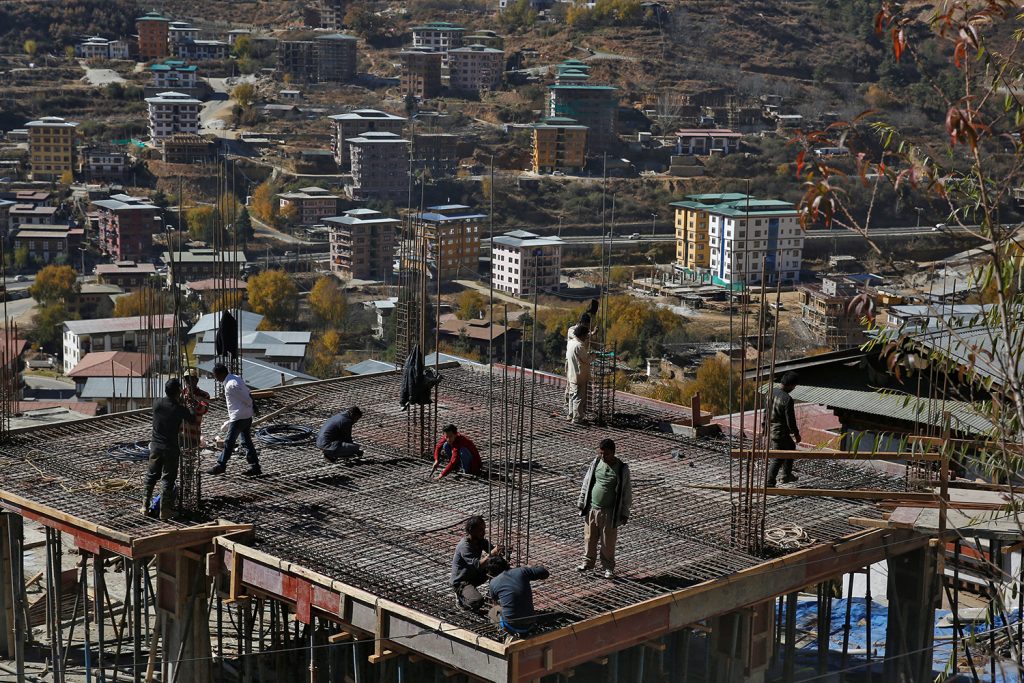
Bhutan’s reliance on India and its lack of other international political relationships make it highly susceptible to shocks and slowdowns in the Indian economy.
Although Bhutan boasts the second-best ranking in South Asia in the World Bank’s ease of doing business index, its deep financial dependence on New Delhi—in addition to a major trade deficit and longstanding aid support from its southern neighbor—creates higher levels of risk. Bhutan’s reliance on India and its lack of other international political relationships make it highly susceptible to shocks and slowdowns in the Indian economy. It also complicates future attempts at diversification and economic shock-proofing, especially in lieu of Bhutan’s close alliance with New Delhi as a counter to Chinese influence in the region. While Bhutan’s impressive emphasis on the ecologically-sound hydropower sector and tourism industry could make an economic success story in South Asia, a heavy susceptibility to the spillover effects of Indian geopolitics complicate its economic development outlook for 2020.
Environmental degradation and climate change
The new year sees a continuation of tensions between economic development, preservation of Bhutan’s pristine ecology, and the international effects of climate change. The Kingdom’s economic growth is highly dependent on climate-sensitive sectors such as tourism, agriculture, and forestry. Bhutan must navigate the tradeoff between continued economic growth and preservation of its pristine ecology, which enables the growth of its tourism, agriculture, and forestry sectors. This balancing act will be made more difficult as the global climate crisis worsens. As a partial response, the government instituted a “sustainable development fee” at the end of 2019 on Indian, Bangladeshi, and Maldivian tourists entering the country, to encourage preservation of its natural landscapes. Thimphu will likely need to take more drastic measures this year to ensure that its superbly well-preserved natural landscapes remain as such, or Bhutan’s economy and ecological health will remain under serious threat.
Doklam boundary dispute
Claimed by both Bhutan and China, the Doklam Plateau remains a lingering risk to Bhutan’s security environment since the Sino-Indian War of 1962, with the most recent flareup occurring in 2017. The dispute over the territory has perpetuated longstanding tensions between Thimphu (whose claim to the territory is strongly supported by New Delhi) and Beijing, also fanning greater regional tensions between India and China. The 1962 conflict drew Bhutan and India closer together, and India now maintains much of the Kingdom’s external defenses.
The Doklam Plateau is a major challenge for Bhutanese foreign policy. A breakthrough in October 2019 raised hopes that the dispute may finally be moving towards a conclusion, as Bhutan and China negotiated a tentative “working boundary.” Given this apparent progress made in de-escalation late last year, some optimism is warranted in watching for a permanent settlement to the dispute this year.
Minority rights
Bhutan has a mixed human rights track record. Longstanding political discrimination continues against Bhutan’s Lhotshampa minority, who comprise about 20 percent of the country. Freedom of expression and freedom of the press remain in a grey area of observance, and many Bhutanese sources ask for anonymity before speaking to the media. The domestic press rarely reports on controversial issues such as religious discrimination against Bhutan’s Christian minority or the more than 100,000 Bhutanese refugees who fled to Nepal in the 1990s. Given the tightening press environment in India under Prime Minister Narendra Modi and the highly restricted press in China, it is unlikely that either of Thimphu’s neighbors will push it to loosen these restrictions, even if the political will to do so exists in Bhutan.
Additionally, while homosexuality is currently criminalized, this has not limited the international movement in support of LGBTQ+ rights from taking hold in Bhutan. The upper house of its parliament will be deliberating a bill to decriminalize homosexuality this year, reflecting strong support for freedom of sexuality among most Bhutanese. Such developments may indicate the start of a gradual opening in Bhutan’s human rights landscape and tolerance of minorities in the coming year.
The authors
Irfan Nooruddin is director of the Atlantic Council’s South Asia Center and professor in the School of Foreign Service at Georgetown University.
Trevor Cloen is an assistant director in the Atlantic Council’s South Asia Center.
Fatima Salman is an assistant director in the Atlantic Council’s South Asia Center.
Harris Samad is a project assistant in the Atlantic Council’s South Asia Center.
Zaara Wakeel is an intern in the Atlantic Council’s South Asia Center.
Shuchismita Hassan is an intern in the Atlantic Council’s South Asia Center.
Benedicta Solf also contributed to this piece.
All photos are courtesy of REUTERS.
More from the South Asia Center:
Image: A man walks along a wall overlooking the central Mumbai financial district skyline February 28, 2013. REUTERS/Vivek Prakash
